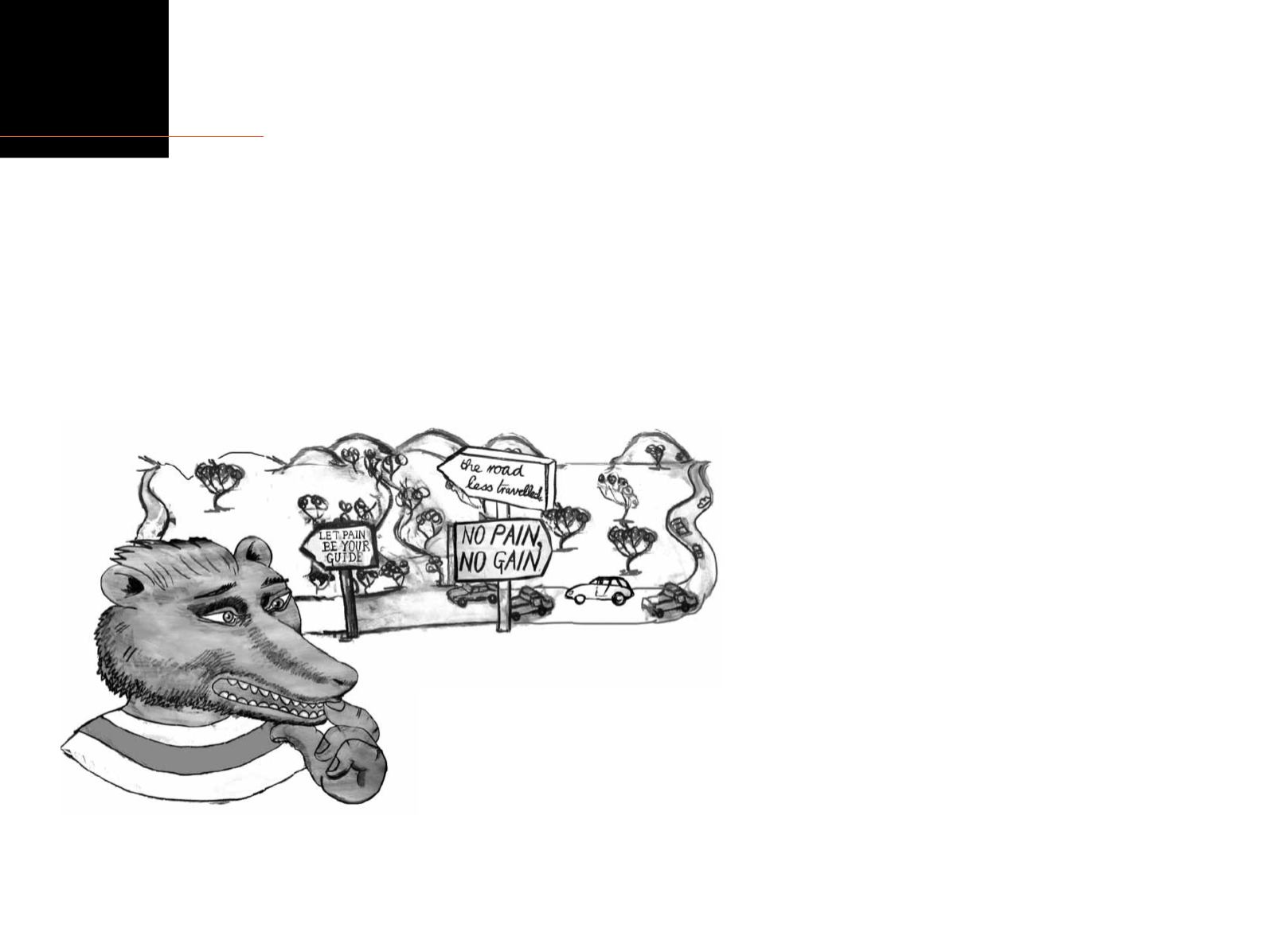
explain
pain
section
6
page
112
Tool 1: Education and understanding
The primary step inmanagement
B
y the time you reach this point in the book, and you
understandwhat we’ve been saying, youwill knowmore
about pain thanmany health professionals do
2
. Well done!
Unless clinicians are up to date with science, some of the
notions presented in this bookmay be unfamiliar to them.
Test yourself. The ‘rat’ (is that really
a rat?) has a choice of three roads to
travel on: the well-trodden roads of
‘no pain, no gain’, and ‘let pain be
your guide’ or ‘the road less
travelled’. Which roadwill he take?
Let’s think about the
no pain, no gain
road. People talk
about pushing through the ‘pain barrier’. We don’t support
this, although for some people there is no harm in vigorous
exercise as long as they understand any pain that is
provoked. For example, some discomfort as you rehabilitate
stiff joints and tight muscles is probably necessary. But pain
is a bit like love, joy or jealousy – have you ever heard of
anyone pushing through the love or joy or jealousy barrier?
Maybe we should say, ‘
know
pain, or no gain’.
What about the
let pain be your guide
road? Formost
people in chronic pain this is not useful either, as we
suggest in the ‘avoid pain’ graph. If youwere to let pain be
your guide youwould do nothing. Sure, it may be of some
use when you have acute pain, so that you don’t interfere
with the healing process – but even in that situation you
will not usually avoid pain altogether. To let pain be your
guide usuallymeans that you are giving in to it, making it
yourmaster, encouraging yourself to be fearful of it. You
have to take control.
We go for the thirdway: understand pain so that you don’t
fear it. This is
the road less travelled
, but ultimately the
road to recovery.


